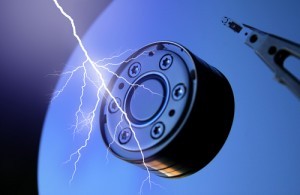Proper Grounding
Proper electrical grounding is essential in protecting server platforms from lightning strikes. Follow the electrical path from server to ground and ensure there are no problems. Servers should be grounded to racks. Racks should be grounded to outlets. Outlets should be properly wired to the building ground, and the building ground should be checked.
Do not hesitate to call in an expert to verify equipment is properly grounded. Building code inspections are not always adequate to ensure the protection of sensitive electronics. Larger and denser data centers will have more demands on the electrical systems and the more crucial it will be to ensure proper grounding is in place.
Power Backup
When the power goes down, you need an uninterrupted power source in place. Even momentary dips in power can create havoc for some systems. Make sure your battery backup is sufficient for your needs. Consider how long a power outage may last when installing your battery backup. If you are in an area prone to severe storms with prolonged outages, you will need greater battery capacity and a matching load to the UPS system.
Surge Protection
Even remote lighting strikes can induce surges on a power line. These surges can do a great deal of damage to servers and other critical IT equipment. Make sure you have adequate surge suppression and circuit interrupters installed. Providing electrical isolation for your critical hardware will reduce those headaches.
Protecting from lighting strikes with proper electrical grounding, power outages with battery backup, and surges through isolation are some of the steps you can take in protecting IT equipment during the thunderstorm seasons.
Contact NEI for additional thoughts on protecting servers and other equipment or to help ease application deployment challenges.
